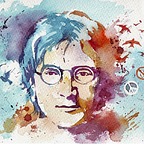The Yin and Yang of Digital and Analog
--
In the 1990s, when the digital revolution gather steam, MIT’s Nicolas Negroponte published his book “Being Digital.” In response, media scholar Carol Wilder published her essay “Being Analog.” Scientist Freeman Dyson followed with his essay “Is Life Analog or Digital?”
The analog-digital debate began during the legendary Macy Conference on Cybernetics (1946–1953) that launched the digital revolution. Among the participants were Claude Shannon, Norbert Wiener, John von Neuman, William Ross Ashby, Gregory Bateson, Julian H. Bigelow, and Margaret Mead.
The analog-digital question was the most contentious issue at the conference. Von Neumann suggested that “one must say that in almost all parts of physics the underlying reality is analogical. . .The digital procedure is usually a human artifact for the sake of description.”
Physiologist Ralph Gerard presented a paper on “Some of the Problems Concerning Digital Notions in the Central Nervous System,” arguing that an analogical system is continuous while a digital system is “discontinuous and quantized.”
Gregory Bateson, anthropologist, social scientist, and cyberneticist, called for clarification of the distinction between analog and digital to remove ambiguities. None was forthcoming and the analogical versus digital debate was shelved as “old business unresolved.”
Before writing Being Analog, Carol Wilders conducted an informal survey by asking her students what they associated with analog and digital phenomena. She included their reactions in a table in her paper (the one shown here is a shortened version). The second table is my own elaboration.
The Macy Conference echoes the Solvay Conferences of the early 20th century that brought together the titans of physics, among them Einstein, Bohr, Schrödinger, Lorentz, Poincaré. Planck, and de Broglie. The conferences looked at the problems of having two approaches to physics: classical mechanics and quantum theory.
The Solvay and Macy Conferences look unrelated but they addressed a related issue. The dichotomies they discussed can be codified using the yin-yang system, if not scientifically then at least philosophically. My book Leibniz, Einstein, and China provides some context for this issue.
Being Analog — Carol Wilder
Is Life Analog or Digital — Freeman Dyson
